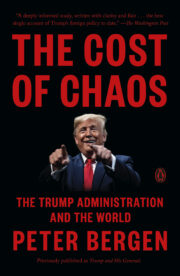Articles
Washington (CNN) — A December 22 briefing, prepared by the top U.S. intelligence official in Afghanistan and obtained by CNN, maps out the strategy and strength of the Taliban and their allies in Afghanistan, and concludes that the Taliban insurgency in Afghanistan is increasingly effective.
(CNN) — On August 28, the Saudi Arabian deputy minister of interior, Prince Mohammed bin Nayef, survived a bombing attack launched by an al Qaeda cell based in Yemen, Saudi Arabia’s southern neighbor.
http://www.tnr.com/article/the-battle-tora-bora
Three senior administration officials outlined on Tuesday some of the concepts and processes that went into President Obama’s new plan for Afghanistan.
Between September 13 and November 23 the president chaired 10 meetings of his national security team to deliberate over the new strategy.
The president agreed with the ground commander in Afghanistan, General Stanley McChrystal’s assessment from the summer that the key goal of the strategy was to reverse the momentum of the Taliban in the next 12 months. He selected from the menu of troop deployment options the one that got American boots on the ground in the most rapid manner.
Chairwoman Harman, committee members, thank you for the opportunity to testify today. My testimony aims to address the evolving threat from al Qaeda to the homeland, to include the threat from al Qaeda itself, groups affiliated or allied to al Qaeda, and those “homegrown” militants influenced by al Qaeda ideas who have no connections to any formal jihadist group. This testimony does not aim to be exhaustive but to cover the most serious cases of recent years and to provide some overall threat assessment.
Editor’s note: Peter Bergen, CNN’s national security analyst, is a fellow at the New America Foundation, a Washington-based think tank that promotes innovative thought from across the ideological spectrum, and at New York University’s Center on Law and Security. He’s the author of “The Osama bin Laden I Know: An Oral History of al Qaeda’s Leader.” Katherine Tiedemann is a policy analyst at the New America Foundation.
We are losing in Afghanistan, on two fronts. The most important center of gravity of the conflict — as the Taliban well recognizes — is the American public. And now, most Americans are opposed to the war.
For years, Afghanistan was “the forgotten war,” and when Americans started paying attention again — roughly around the time of President Obama’s inauguration — what they saw was not a pretty sight: a corrupt Afghan government, a world-class drug trade, a resurgent Taliban and steadily rising U.S. casualties.
As a result of the unprecedented 41 drone strikes into Pakistan authorized by the Obama administration, aimed at Taliban and al Qaeda networks based there, about a half-dozen leaders of militant organizations have been killed–including two heads of Uzbek terrorist groups allied with al Qaeda, and Baitullah Mehsud, the leader of the Pakistani Taliban–in addition to hundreds of lower-level militants and civilians, according to our analysis
Of course, not many suburban guys buy six bottles of Clairoxide hair bleach, as Zazi did on this shopping trip–or return a month later to buy a dozen bottles of “Ms. K Liquid,” a peroxide-based product. Aware that these were hardly the typical purchases of a heavily bearded, dark-haired young man, Zazi–who was born in Afghanistan and spent part of his childhood in Pakistan before moving to the United States at the age of 14–kibitzed easily with the counter staff, joking that he had to buy such large quantities of hair products because he “had a lot of girlfriends.”
Peter Bergen, CNN’s national security analyst, is a fellow at the New America Foundation, a Washington-based think tank that promotes innovative thought from across the ideological spectrum, and at New York University’s Center on Law and Security. He’s the author of “The Osama bin Laden I Know: An Oral History of al Qaeda’s Leader.”
FEATURED BOOK

 Previous
Previous
